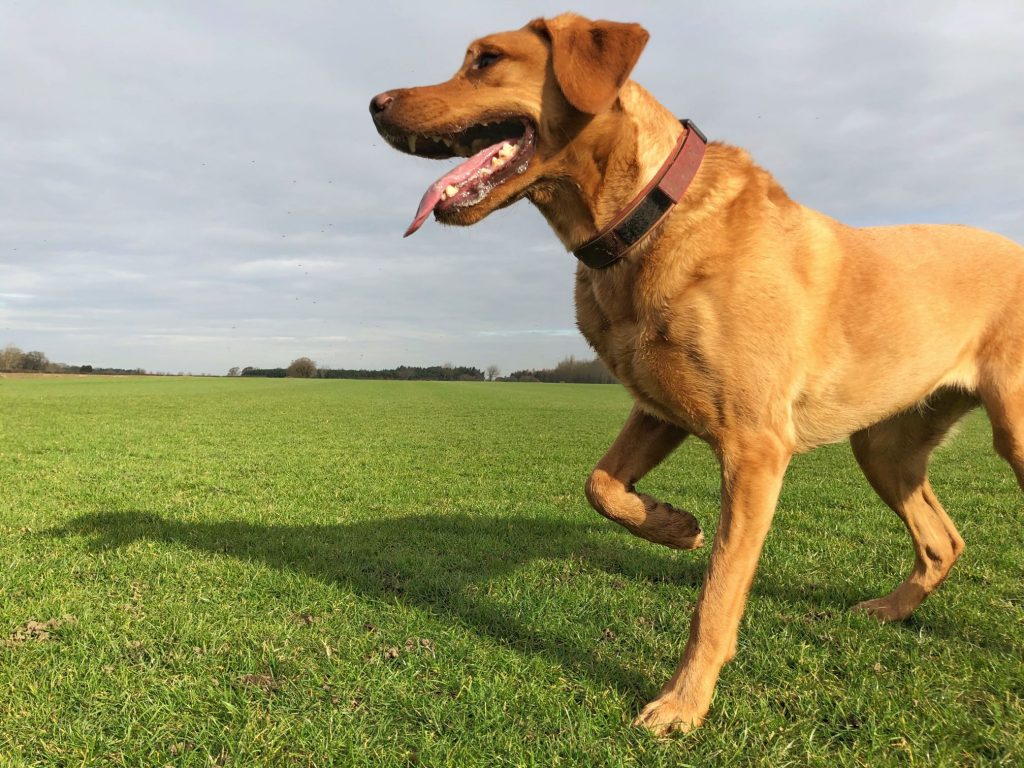Your Dog Has a Limp, Time to Investigate Why

An older dog may start to show signs of aging in the ways they move. Or, rather, by restrictions to their movements. Osteoarthritis is a very real threat to the health and well-being of senior pets. Among other symptoms, limping can become part of their new normal. Luckily, changes to their nutrition, treatment, and lifestyle accommodations can go a long way toward easing their aching joints.
There could be other explanations behind a sudden or gradual disruption to a dog’s gait. If your dog has a limp, we encourage you to take steps toward understanding why and what you can do to help.
Cause for Concern
It’s quite common for a dog to take a landing wrong during a game of Frisbee, or show signs of overexertion after a recent hike. Limping can definitely be a cause for concern. Encourage your pet to rest for a few minutes. Take time to examine their feet, legs and back for any signs of obvious injury. If they show signs of weakness, pain, or tenderness in a certain area it’s a good idea to seek help.
Whatcha Got There?
When a dog has a limp, the very first step is to take a close look at the paw pads. Thorns, barbs, slivers, glass, rocks, metal, hooks, and other debris can easily become lodged in the skin of their feet. If the object is small enough you can try to remove it with tweezers, taking great care to clean and disinfect the area.
Injuries to the paw pads aren’t uncommon. Be sure that your dog doesn’t walk on hot or cold surfaces, or super rocky terrain.
Broken or cracked nails can affect a dog’s ability to walk normally. Similarly, untrimmed nails can dig into the skin of their feet causing intense discomfort.
As with any infection, an examination of your pet’s feet may be an important next step.
Ouch Factor
When a dog has a limp, they may actually be suffering from a bone fracture or break. You might not realize it when the injury occurs, but if you see any abnormal movements of the limb, swelling, pain, bruising, or hear whining/whimpering, grinding or popping sounds, you have a pet emergency on your hands. Torn muscles can also be incredibly painful, leading to limping on the impacted leg.
Same, but Different
Strains and sprains are common culprits. Strains affect the ligaments between muscles and bones and typically occur in the hips or thighs of athletic or active dogs. Sprains impact the ligaments that connect bones, causing long term joint damage in the wrist and knee joints.
Your Dog Has a Limp
Depending on your dog’s age, breed, lifestyle and health history, they may be predisposed to certain conditions that affect walking and mobility, including:
- Luxating patella
- ACL rupture
- Hip or elbow dysplasia
- Panosteitis (growing pains)
- Lyme disease
- Degenerative nerve disease
The prognosis of all the above conditions depends on veterinary treatment and support at home.
Whether or not you know why your dog has a limp, they will still benefit from a veterinary exam. In the case of broken bones or other serious injuries, surgery may be the only option. Often, the sooner your pet gets the help they need, they’ll have a higher chance for a full recovery.
Please give us a call at (260) 637-7676 with any questions or concerns. Our veterinarians and staff members are always here for your dog.

